
A Musen-Almanach ("Muses' Almanac") was a kind of literary annual, popular in Germany from 1770 into the mid-19th century. They were modelled on the Almanach des Muses published in Paris from 1765.

A Musen-Almanach ("Muses' Almanac") was a kind of literary annual, popular in Germany from 1770 into the mid-19th century. They were modelled on the Almanach des Muses published in Paris from 1765.
The first example was Johann Christian Dieterich's Göttinger Musenalmanach (GMA) of 1770. It was promoted by the mathematician Abraham Gotthelf Kästner, and published by Heinrich Christian Boie (in partnership with Friedrich Wilhelm Gotter). As a literary outlet for students at the University of Göttingen, it received contributions from Johann Heinrich Voss, Ludwig Christoph Heinrich Hölty, Johann Martin Miller and his relative Gottlob Dietrich Miller, Johann Friedrich Hahn, Johann Thomas Ludwig Wehrs, Johann Anton Leisewitz, and others. In 1774 Boie made Voss editor, but Voss soon left for Hamburg and started a competing almanac; in spring 1775, he was replaced by Leopold Friedrich Günther Goeckingk; he was joined the next year by Gottfried August Bürger, who became sole editor in 1779. After Bürger's death in 1795 he was replaced by Karl Reinhard.
A semi-pirated imitation by Engelhard Benjamin Schwickert, Leipziger Almanach der deutschen Musen, simultaneously appeared in Leipzig. Despite including nineteen stolen items, it was on sale before the GMA. The editor was Christian Heinrich Schmid, and in subsequent years it would include the work of Friedrich Gottlieb Klopstock, Christian Fürchtegott Gellert, Johann Wilhelm Ludwig Gleim and Karl Wilhelm Ramler. From 1776 it was titled Leipziger Musen-Almanach, and from 1782 Benjamin took over as editor.
The third almanac to appear was that of the Johann Heinrich Voss previously mentioned, the Hamburger Musenalmanach. The first issue of 1776 lost money, and Voss transferred management to Carl Ernst Bohn, but continued to edit, with the help (from 1779 to 1786) of Goeckingk.
In Vienna in 1777, the Wienerischer Musenalmanach (or Wiener Musen-Almanach from 1786) appeared. The editor was Joseph Franz von Ratschky, and he was joined by Aloys Blumauer in 1781, and later by Gottlieb von Leon and Martin Joseph Prandstätter. The last issue appeared in 1796.

Other similar almanacs were less successful, including Friedrich Schiller's Anthologie (1782) which only appeared once. His second attempt was Musen-Almanach (1796–1800) which is the most famous example in the entire genre, because of the contributors: Johann Wolfgang von Goethe, Johann Gottfried Herder, Ludwig Tieck, Friedrich Hölderlin and August Wilhelm Schlegel.
Inspired by his example, there followed Musenalmanache by August Wilhelm Schlegel and Ludwig Tieck (Tübingen 1802), by Johann Bernhard Vermehren (Leipzig 1802 and Jena 1803), the Musenalmanach by Adelbert von Chamisso and Karl August Varnhagen von Ense (1804–1806), the Poetische Taschenbuch of Friedrich Schlegel (Berlin 1805–1806) and the Musenalmanach edited by Leo von Seckendorf (Regensburg 1807–1808).
The heyday of the almanac was perhaps the 1820s, during which decade they gradually began to appear in England in an etiolated form as literary annuals. In 1823, a writer in the European Magazine of London commented:
The Musen-Almanach was gradually superseded by the Taschenbuch ("pocket book") and by the literary magazine as we know it today — some still bearing the word Musenalmanach in their titles. However, short-lived annuals of the same kind continued to appear as late as the 1860s.

Johann Ludwig Tieck was a German poet, fiction writer, translator, and critic. He was one of the founding fathers of the Romantic movement in the late 18th and early 19th centuries.

German Romanticism was the dominant intellectual movement of German-speaking countries in the late 18th and early 19th centuries, influencing philosophy, aesthetics, literature, and criticism. Compared to English Romanticism, the German variety developed relatively early, and, in the opening years, coincided with Weimar Classicism (1772–1805). In contrast to the seriousness of English Romanticism, the German variety of Romanticism notably valued wit, humour, and beauty.
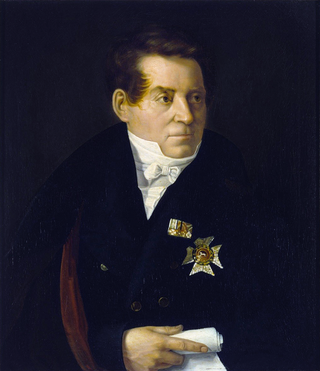
August WilhelmSchlegel, usually cited as August Schlegel, was a German poet, translator and critic, and with his brother Friedrich Schlegel the leading influence within Jena Romanticism. His translations of Shakespeare turned the English dramatist's works into German classics. Schlegel was also the professor of Sanskrit in Continental Europe and produced a translation of the Bhagavad Gita.

Johann Heinrich Voss was a German classicist and poet, known mostly for his translation of Homer's Odyssey (1781) and Iliad (1793) into German.
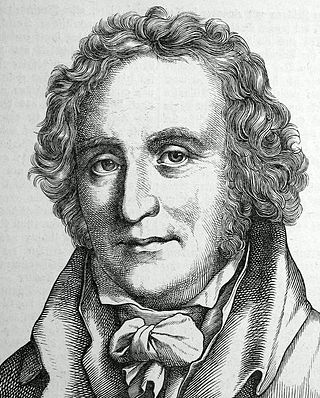
Friedrich Leopold Graf zu Stolberg-Stolberg, was a German lawyer, and translator born at Bramstedt in Holstein. He was also a poet of the Sturm und Drang and early Romantic periods.
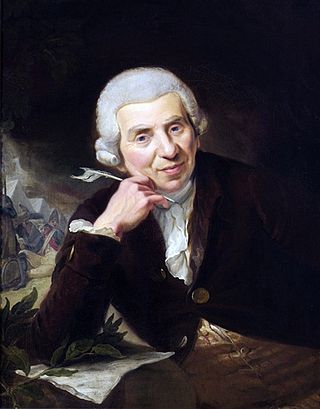
Johann Wilhelm Ludwig Gleim was a German poet, commonly associated with the Enlightenment movement.
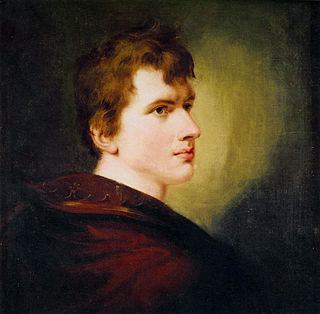
Carl Joachim Friedrich Ludwig von Arnim, better known as Achim von Arnim, was a German poet, novelist, and together with Clemens Brentano and Joseph von Eichendorff, a leading figure of German Romanticism.
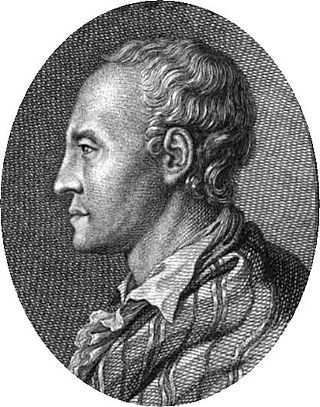
Ludwig Christoph Heinrich Hölty was a German poet, known especially for his ballads.

Wilhelm Heinrich Wackenroder was a German jurist and writer. With Ludwig Tieck and the Schlegel brothers, he has co-founded the German Romanticism.

August Ferdinand Bernhardi was a German linguist and writer.
Johann Christian Dieterich (1722–1800) was the founder of the Dieterich'schen Verlagsbuchhandlung publishing house and a close friend of Georg Christoph Lichtenberg. He published the first Musen-Almanach.
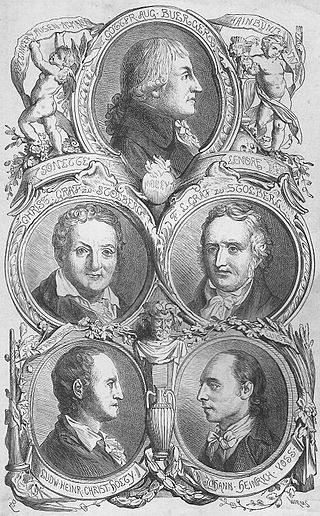
The Göttinger Hainbund was a German literary group in the late 18th century, nature-loving and classified as part of the Sturm und Drang movement.

Göttinger Musenalmanach was the title of two different literary magazines published in Göttingen, Germany, one running from 1770 to 1807, the other 1896 to 1953. A Musen-Almanach was a kind of literary annual, and the Göttingen magazine of 1770 was the first German example.

Johann Martin Miller was a German theologian and writer. He is best known for his novel Siegwart, which became one of the most successful books at the time.
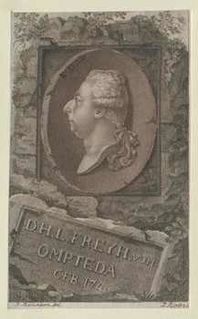
Dietrich Heinrich Ludwig von Ompteda was a Hanoverian jurist and government minister.

Johann Anton Leisewitz was a German lawyer and dramatic poet, and a central figure of the Sturm und Drang era. He is best known for his play Julius of Taranto (1776), that inspired Friedrich Schiller and is considered the forerunner of Schiller's quintessential Sturm und Drang work The Robbers (1781).
Die Horen was a monthly German literary journal published from 1795 to 1797. It was printed by the Cotta publishing house in Tübingen and edited and run by Friedrich Schiller. Many and partially antagonistic prominent figures in German culture of the time contributed, among them Johann Jakob Engel, Fichte, Goethe, Herder, Alexander von Humboldt, Wilhelm von Humboldt, Friedrich Heinrich Jacobi, Johann Heinrich Meyer, August Wilhelm Schlegel, and Karl Ludwig von Woltmann. The journal formed the cornerstone of Weimar Classicism and exerted a great influence onto German intellectual history.

Caroline Rudolphi was a German educationist and poet. Born to a poor family in Magdeburg and growing up in Potsdam, she was discovered by composer Johann Friedrich Reichardt, who in 1781 set to music and published a number of her poems. From 1778, Rudolphi served as educator to the daughters of the von Röpert family of Trollenhagen. In 1783, she opened her own educational institute at Trittau. Over the following years, Rudolphi became a widely known and respected educationist for girls. She became friends with Elise Reimarus, and at her institute she established a literary salon, attracting a circle of intellectuals such as Matthias Claudius, Friedrich Gottlieb Klopstock, Friedrich Heinrich Jacobi, Jens Baggesen.

Sophie Tieck, later known as Sophie Bernhardi or Sophie von Knorring, was a German Romantic writer and poet. Her role as a writer of the Romantic period was overshadowed by her brother Ludwig and her first husband. She was only really appreciated as an important writer when her letters were published in the 1960s.